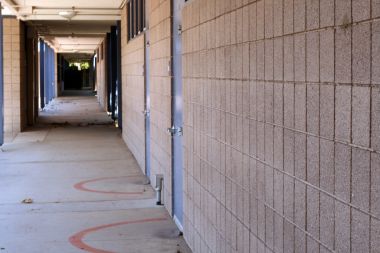Introduction
Just as a federal effort to reform school discipline gets underway, the country’s most populous state — California — has released new data showing a significant one-year drop in suspensions and expulsions of schoolchildren.
However, Latino and black students in California continue to be affected disproportionately by discipline that removes them from classrooms and often leaves them further behind academically, as the Center for Public Integrity has reported in stories about San Francisco and rural Kern County.
The new data released by California’s Department of Education show that total student expulsions in the Golden State in the 2012-2013 academic year fell by about 12 percent from the previous year. That means about 8,560 students were ordered removed last year for a semester or an entire academic year from their regular schools.
State law requires they be referred to alternative education campuses.
The total number of in-school or out-of-school suspensions fell by 14 percent, to about 609,470 students suspended for a day or several days at one time.
Black students represent about 6 percent of all students in California, but accounted for 16 percent of suspensions. Latino students are about 53 percent of all students, but were 55 percent of those suspended. White students, 26 percent of enrollment, were 21 percent of those suspended.
Concerned by research showing that suspensions and expulsions lead to student failure — rather than reversing it — the Obama Administration released an unprecedented set of guidelines in early January urging schools to embrace alternative disciplinary methods that have proven effective at resolving conflict without kicking kids out.
The administration’s guidelines also advise school districts that students’ civil rights must be respected; both the Department of Education and Justice have fielded complaints about disproportionate punishment meted out to students who are ethnic minorities — for the same infractions as white students — or overly harsh treatment of students who have special needs.
California’s new data also reveals that a region with a reputation for tough school discipline — the Central Valley’s Kern County — has cut its expulsions but continues to remove students in raw numbers that rival far more populous Los Angeles County.
Kern had an enrollment of only about 178,600 students compared to Los Angeles County’s more than 1.5 million students last year. But in Kern County, 509 students were expelled last year compared to 577 in Los Angeles County.
In the 2010-2011 school year, Kern reported more than 2,570 expulsions.
The Center and KQED Public Radio in San Francisco reported last year on expelled Kern students who were adrift because they were assigned to alternative schools so far away away — up to 40 miles — that their farmworker parents were unable to drive them there.
One student, 13, was isolated at home on independent study except for the one day a week his mother could drive him to school. Despite this arrangement, the alternative school collected full funding as if the boy was on an alternative campus every day; hundreds of other independent study students were subject to similar funding arrangements.
Additional expelled Kern students were effectively forced to drop out because their farmworker parents could not do their field jobs and drive children to distant alternative campuses. One girl’s parents sent her to a rural Mexican school for several months because her alternative school in Kern was 20 miles away.
After media exposure and pressure from local community activists, the teens who had dropped out were admitted back into their home high school.
California’s Superintendent of Education, Tom Torlakson, credited the statewide decline in suspensions and expulsions in the 2012-2013 academic year to a concerted drive in many school districts to embrace new discipline methods.
“Educators across California work hard to keep students in school and learning,” Torlakson said in a press release. “It can be a challenge to find the balance between maintaining a safe learning environment and giving young people the tools and opportunities they need to succeed. But we’re working with schools and districts throughout the state to do exactly that.”
Read more in Education
Juvenile Justice
Obama announces foundation-funded project to help black, Latino youth
Center investigations looked at school discipline problems
Juvenile Justice
Closing a troubled symbol of Texas juvenile justice
Ebb and flow of policy reflected in long, disturbing history at Corsicana


Join the conversation
Show Comments